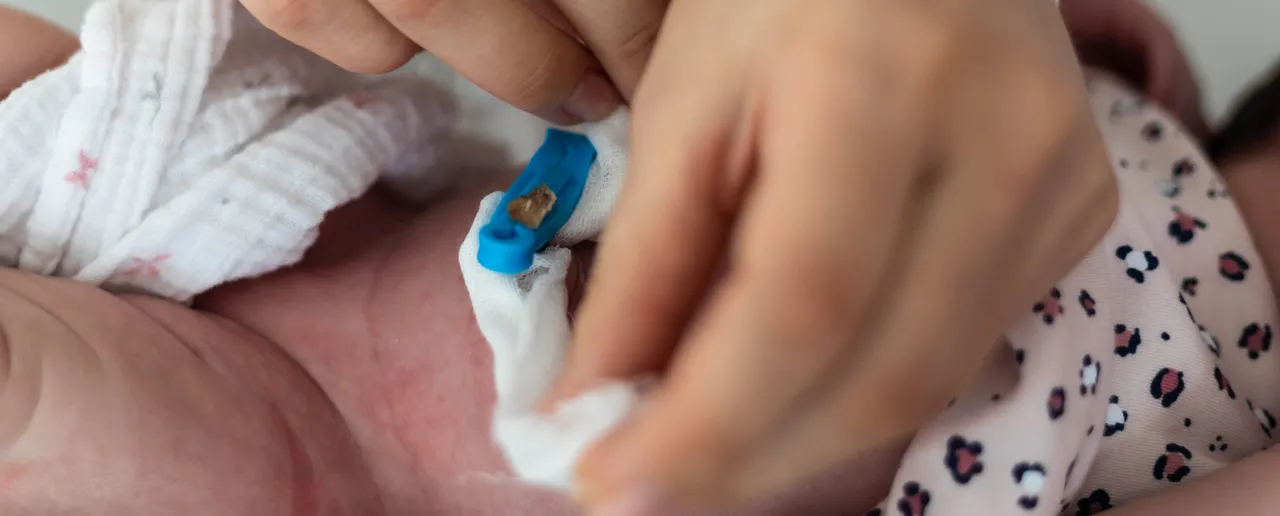What is an umbilical stump?
Your baby’s umbilical stump is what remains attached to your baby after the doctor or midwife has clamped off and cut the umbilical cord. It is a protruding piece of flesh a few centimetres in length that will eventually fall off.
When does it fall off?
Your newborn’s umbilical stump will usually fall off within a week. The hole that is left behind will scab and heal over to become your baby’s belly button – this usually occurs 7 to 10 days later.
It’s normal for there to be a bit of pus and blood during the entire process – after all, it’s a wound like any other. But if you see any signs of infection, such as redness, swelling, fever or noxious odours, you should take your baby to the doctor.
How can I encourage it to fall off?
It is important that your baby’s body is allowed to do its own thing when it comes to the umbilical stump. An unnaturally hurried process can lead to infection and scarring.
The best thing you can do is to keep the area dry through exposure to lots of air, and clean through gentle cleansing and good hygiene – both yours and your baby’s.
How do I keep it clean?
- Always wash your hands before handling the area or cleaning it, especially before and after nappy changes.
- Reduce the risk of exposing the stump to wee or poo by folding your baby’s nappy down below the waist.
- When washing, use a pH neutral cleanser, or just stick to water. And always pat the area dry afterwards.
- Select clothing that is looser rather than tight, and increase times when the stump is exposed to air.
- Avoid the use of antiseptic or lotions as these can lock moisture in and increase healing time.
Although 9 times out of 10 the body doesn’t need extra help, occasionally your baby’s umbilical stump will take longer than normal to heal. If it seems to be taking an unusually long time, or the wound looks angry and sore, it’s a good idea to take your newborn to your doctor, paediatrician or midwife.
